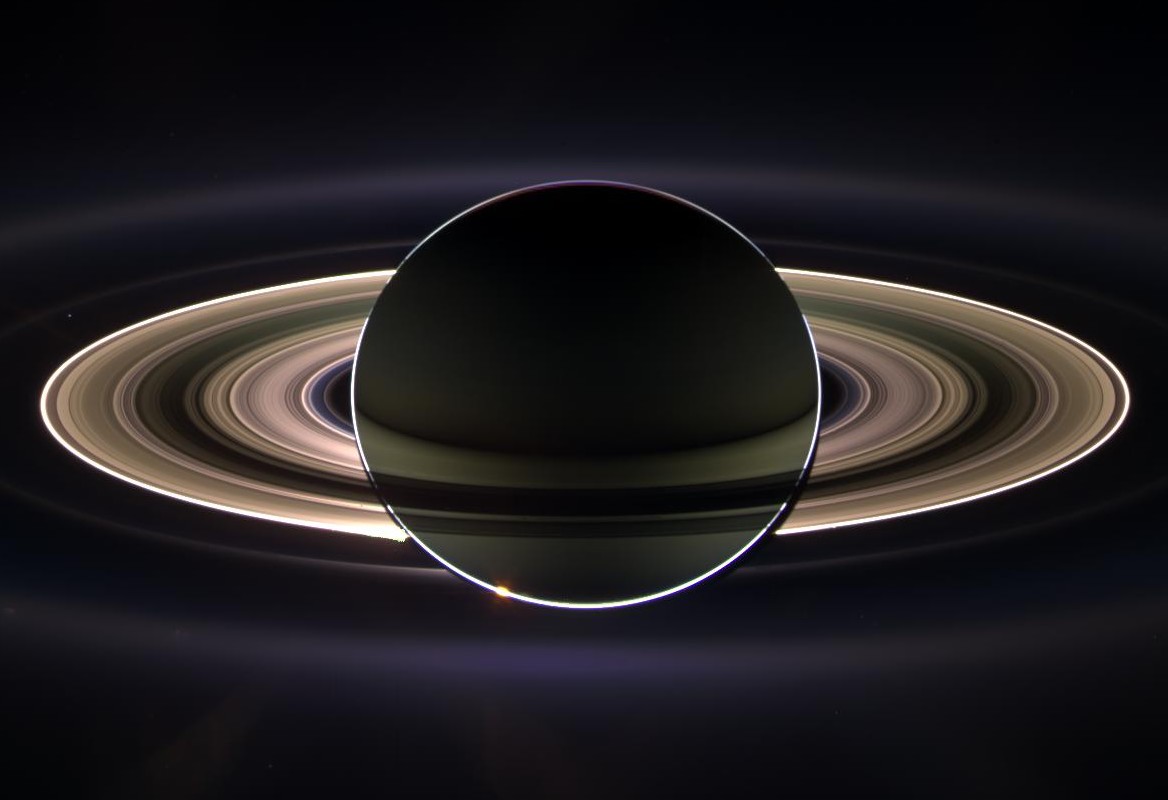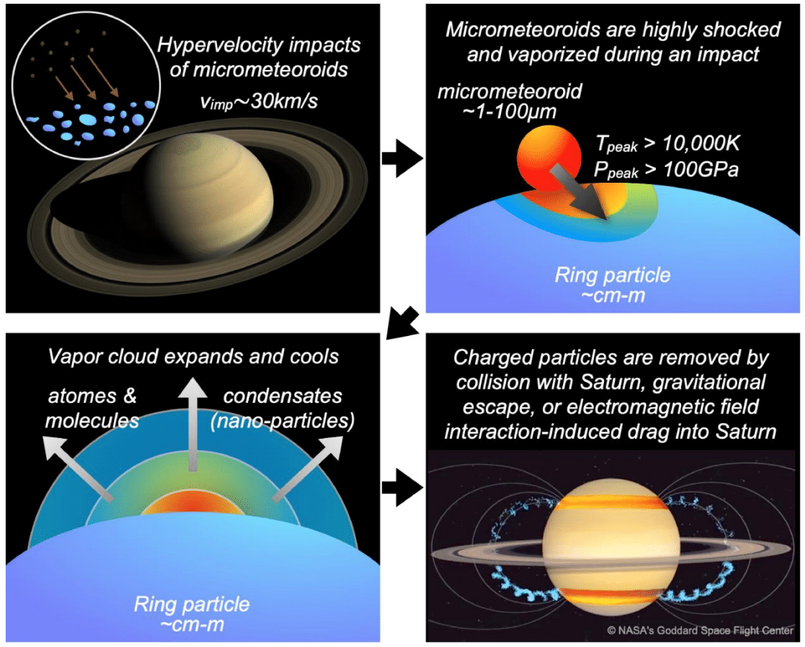Follow us on Google News (click on ☆)

Saturn as seen by the Cassini probe - NASA image.
Dr. Ryuki HYODO, Chief Scientific Officer (CSO) at SpaceData Inc. and affiliated with the Institut de Physique du Globe de Paris (IPGP) and the University of Tokyo's School of Science, in collaboration with Dr. Gustavo MADEIRA from IPGP and Université Paris Cité, as well as Dr. Hidenori GENDA from the University of Tokyo, has demonstrated that the formation of Saturn's rings could be much earlier than previously believed.
Their youthful, bright, and water-ice-rich appearance might be just an illusion. This study, published in the international journal Nature Geoscience, challenges traditional assumptions through theoretical models and numerical simulations.
For the first time, the team has proven that Saturn's rings are highly resistant to contamination by exogenous micrometeorites. This thermodynamic "cleaning" mechanism would explain their "young" appearance, while suggesting that they could actually date back to the formation of the Solar System, approximately 4.5 billion years ago. These findings overturn the prevailing idea that Saturn's rings are relatively recent, being only 400 million years old.
This mechanism, illustrated below, describes how micrometeorites interact with Saturn's rings. When a micrometeorite strikes the ring particles at a speed of 20 km/s (12.4 miles/s), the extremely violent impact causes the complete vaporization of the micrometeorite, forming a hot plasma reaching temperatures of about 10,000 degrees Celsius (18,000 degrees Fahrenheit).
This ionized material is then rapidly expelled under the influence of Saturn's magnetic field, either being drawn toward the planet itself or ejected outside the rings. This process helps maintain the purity and brightness of the rings by preventing the accumulation of foreign matter.

(1) Schematic representation of the protection mechanism of Saturn's rings. Micrometeorites regularly strike Saturn's rings at a speed of 20 km/s (12.4 miles/s) and darken them.
(2) During the impact, the material is transformed into plasma and heated to temperatures exceeding 10,000 degrees Celsius (18,000 degrees Fahrenheit)!
(3) A cloud of ionized plasma forms and rapidly expands.
(4) The ionized atoms are coupled to Saturn's magnetic field and are either ejected or transported into the planet.
The bombardment by micrometeorites consists of tiny dust particles, primarily composed of carbon and silicates, originating from outside the Saturnian system, particularly from the Kuiper Belt. It was once thought that these particles gradually accumulated on celestial objects, including Saturn's rings, causing them to darken and increase in non-icy components.
However, observations from the Cassini probe (NASA-ESA) revealed that Saturn's rings are composed of more than 99% water ice. This composition led to studies in the 2010s-2020s estimating their age to be no more than 400 million years by simply measuring the time required for this "dust" to accumulate. Recent work challenges this method.
The study reveals mechanisms preventing the accumulation of micrometeorites on Saturn's rings. These mechanisms imply that the rings could be as old as the Solar System itself. These results highlight that judging the age of the rings based on their appearance can be misleading, significantly altering our understanding of their origin and evolution.
This study establishes a new foundation for rethinking the evolution of Saturn's rings and the formation processes of ring systems around other planets. Understanding when and how these gigantic structures formed could enrich our understanding of the history of the Solar System, while providing clues about the evolution of Earth into a habitable planet.